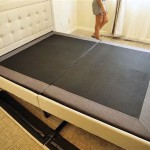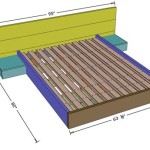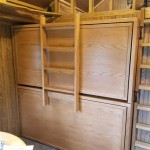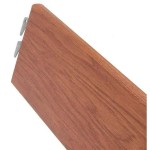Bedding for Queen Size Beds: A Comprehensive Guide
A queen-size bed, measuring 60 inches by 80 inches, offers ample space for comfortable sleeping and lounging. Choosing the right bedding for your queen-size bed is crucial for creating a restful and inviting sanctuary. From sheets and blankets to duvets and pillows, there are numerous options available, each with its unique characteristics and benefits. This guide will delve into the essential aspects of bedding for queen-size beds, empowering you to make informed decisions and create the perfect sleep environment.
Sheet Sets: Foundation for Comfort
Sheet sets are the foundation of your bedding, directly impacting your sleep quality. When selecting sheet sets for a queen-size bed, several factors are essential to consider:
- Fabric: Cotton is a popular choice due to its breathability and softness. Egyptian cotton, renowned for its luxurious feel and durability, is a premium option. Other options include linen, silk, bamboo, and microfiber, each offering distinct characteristics in terms of texture, breathability, and temperature regulation.
- Thread Count: A higher thread count generally indicates a smoother and softer fabric. However, the thread count alone does not determine quality. The quality of the cotton and the weaving process are crucial factors. Opt for sheets with a thread count between 200 and 600 for a balance of softness and durability.
- Fit: Ensure the sheets fit snugly on your mattress without bunching or slipping. Look for deep pocket sheets, especially if your mattress is thick. Consider the benefits of fitted sheets that include a tailored fit around the mattress, preventing them from bunching or slipping during the night.
Blankets and Comforters: Adding Warmth and Style
Blankets and comforters provide warmth and aesthetic appeal. They come in various materials, weights, and styles, allowing personalization to suit individual preferences and climate conditions.
- Blankets: These offer warmth, ranging from lightweight throws for summer nights to heavy fleece blankets for chilly winters. Common blanket materials include fleece, wool, cashmere, and microfleece, each offering different levels of warmth and texture. Consider factors like the desired weight, texture, and the level of warmth needed for your climate.
- Comforters: These are typically thicker and heavier than blankets, providing warmth and a luxurious feel. They often feature a quilted design and are filled with materials such as down, feathers, or synthetic fibers. Down comforters are known for their exceptional warmth and lightness, while synthetic options are hypoallergenic and often more affordable. Think about the desired level of warmth, the fill material, and the overall aesthetic to match your bedroom decor.
Duvets: A Versatile and Luxurious Option
Duvets offer a luxurious and versatile bedding solution. They consist of a filled cover, similar to a comforter but often with a removable and washable cover. The filling is usually made of down, feathers, or synthetic fibers, providing varying warmth depending on the fill type and weight.
- Down Duvets: Known for their exceptional warmth and lightness, down duvets offer a luxurious feel. They are ideal for colder climates and individuals who prefer a lightweight, breathable option. Down duvets typically come with a fill power rating, which indicates the loftiness and warmth of the filling. A higher fill power rating indicates a more luxurious and warmer duvet.
- Feathered Duvets: A less expensive alternative to down, feather duvets offer adequate warmth. They are often more affordable than down duvets, but they may not be as lightweight or breathable. Choose feathered duvets if you are seeking warmth without the high cost of down.
- Synthetic Duvets: These duvets are filled with synthetic fibers, often made from polyester. They are hypoallergenic and washable, making them suitable for individuals with allergies or sensitivities. Synthetic duvets are also a more affordable option compared to down or feather duvets.
Pillows: Crucial for Sleep Quality
Pillows play a crucial role in supporting your head, neck, and spine during sleep. Choosing the right pillow is essential for ensuring proper alignment and comfort.
- Pillow Type: Pillow types vary based on the filling material and firmness. Common options include memory foam, latex, down, and fiberfill pillows. Memory foam pillows conform to your head and neck shape, offering excellent support. Latex pillows are known for their breathability, responsiveness, and durability. Down pillows offer a luxurious and comfortable option, while fiberfill pillows are often more affordable.
- Pillow Loft: The loft of a pillow refers to its height. High-loft pillows provide extra support, while low-loft pillows offer a softer feel. Consider your sleeping position and personal preferences when selecting the appropriate loft. If you sleep on your back, a medium-loft pillow is often recommended, while side sleepers might prefer a high-loft pillow to support their neck.
- Pillow Size: Queen-size beds typically accommodate two standard-size pillows or one queen-sized pillow. Consider your personal sleeping needs and preferences when choosing the pillow size. Some individuals prefer to use additional pillows for support and comfort.

The 6 Best Comforters Of 2024 Reviews By Wirecutter

How To Layer Your Bed Our Best Bedscaping Tips Grandin Road Blog

Bedding Sets Bed Sheets Pillowcases At Home

How To Style A Queen Bed Nikki S Plate

Down Bedding For The Whole Family Duvet Sizes Queen Size Comforter Bed Covers

Bedsure White King Comforter Set 7 Pieces Pintuck Bed In A Bag Bedding Sets With Comforters Sheets Pillowcases Shams Com

Queen Size Duvet Bedding Dimensions

Bedding Sets Full Queen King Pottery Barn

33 Cute Bedding Ideas For Sweet Dreams Pottery Barn Teen

Luxury Bedding 18 Best Brands To Invest In Now
Related Posts







